Getting Started
Understanding how to be good at pickleball requires mastering fundamentals, developing strategy, and consistent practice. Success comes from precision, strategy, and smart shots rather than power or athleticism.
Before diving into advanced techniques, it’s essential to understand the basic rules and court setup. Check out our complete pickleball play guide covering history and official rules to ensure you have a solid foundation of the game’s fundamentals.
Learning how to be good at pickleball rewards patience, placement, and percentage plays over aggressive power shots.
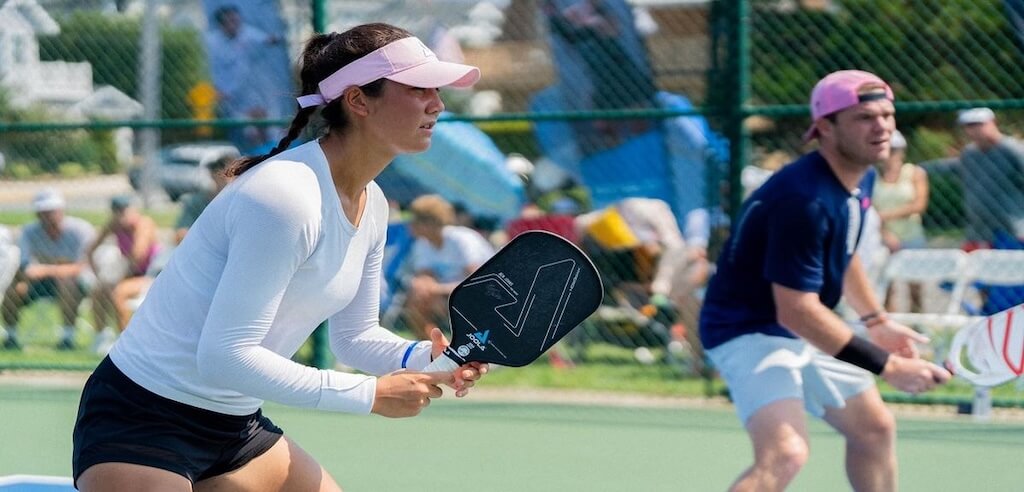
Master the Fundamentals
Serving That Wins Points
Professional player Jaci West Reynolds says serving is “the one stroke you can control, from the toss, to timing, to speed.” Understanding how to be good at pickleball starts with a consistent, reliable serve.
Key Serving Points:
- Toss the ball in the same spot every time
- Keep contact point below the waist
- Stay relaxed during execution
- Depth beats power – deeper serves work better
- Serve from centerline for better court coverage
A good serve sets up every point. Learning how to be good at pickleball means making your serve push opponents behind the baseline, giving you more time for your third shot.
Ready Position Basics
Keep your paddle up and in front of you, positioned above chest level. This is fundamental to how to be good at pickleball.
Ready Position:
- Feet shoulder-width apart, knees slightly bent
- Weight on balls of feet
- Paddle at chest level
- Eyes on opponent and ball
- Relaxed grip (3/10 tension)
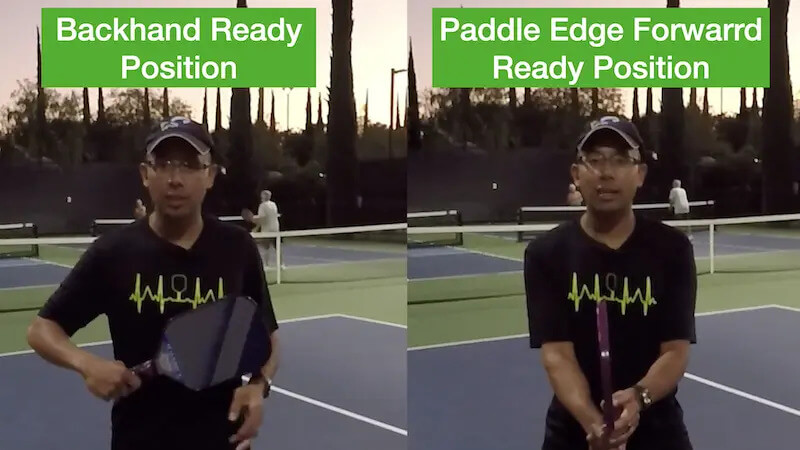
Develop Superior Footwork
Movement Basics
Mastering how to be good at pickleball requires excellent footwork. Professional coaches call this the most important yet overlooked part of the game. Good footwork keeps you balanced and prevents exhaustion.
Core Footwork:
- Split Step: Small hop before opponent hits, feet shoulder-width apart
- Shuffle Step: Move side-to-side while facing the court
- Crossover Step: Cross one foot over the other for faster movement
- Ready Position: Athletic stance, knees bent, weight forward
Practice Drills
Understanding how to be good at pickleball includes these footwork drills:
Ladder Drills: Move through agility ladder patterns for better foot speed.
Cone Drills: Set up zigzag patterns and practice quick lateral moves.
Shadow Drills: Practice shots without balls, focus on footwork only.
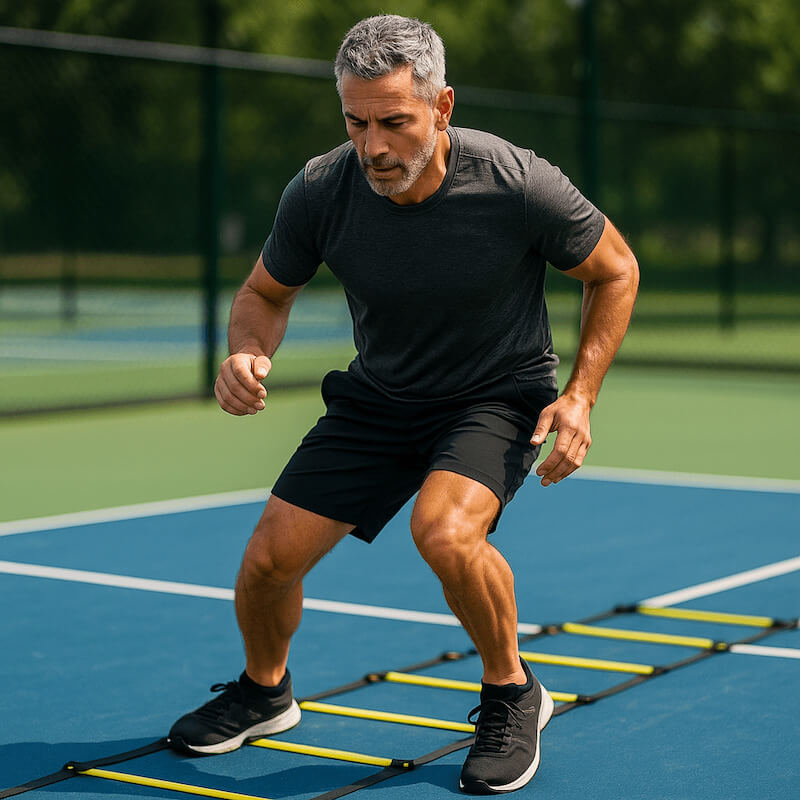
Strategic Shot Development
Master the Dink Shot
Learning how to be good at pickleball requires mastering the dink – a soft shot that lands in the opponent’s kitchen. This shot separates beginners from advanced players.
Dink Basics:
- Minimal backswing with controlled follow-through
- Gentle upward motion to clear net
- Target opponent’s kitchen consistently
- Focus on placement, not speed
- Practice patience – dinking sets up wins
Third Shot Drop
The third shot drop is critical for understanding how to be good at pickleball. This shot moves teams from baseline defense to kitchen offense.
Third Shot Drop:
- Hit with soft touch and high arc
- Land ball in opponent’s kitchen
- Use to advance to net safely
- Practice timing – hit when conditions are right
- Don’t rush net after every serve
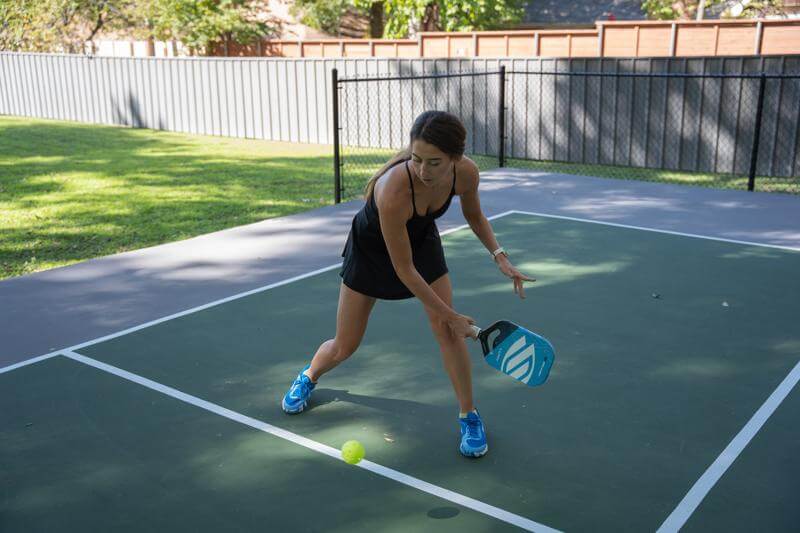
Physical and Mental Training
Fitness for Pickleball
Understanding how to be good at pickleball includes recognizing the sport’s physical demands. While less intense than tennis, pickleball still requires specific fitness.
Key Fitness Areas:
- Cardiovascular endurance for long rallies
- Lateral agility and quick direction changes
- Core strength for balance and power
- Hand-eye coordination and reaction time
- Flexibility for injury prevention
Mental Game
Learning how to be good at pickleball involves mental toughness and strategic thinking. Pros emphasize two key mental skills: high-percentage shots and anticipating opponents.
Mental Training:
- Practice visualization
- Develop patience for strategic play
- Read opponent tendencies and weaknesses
- Stay positive during tough points
- Focus on process, not outcomes
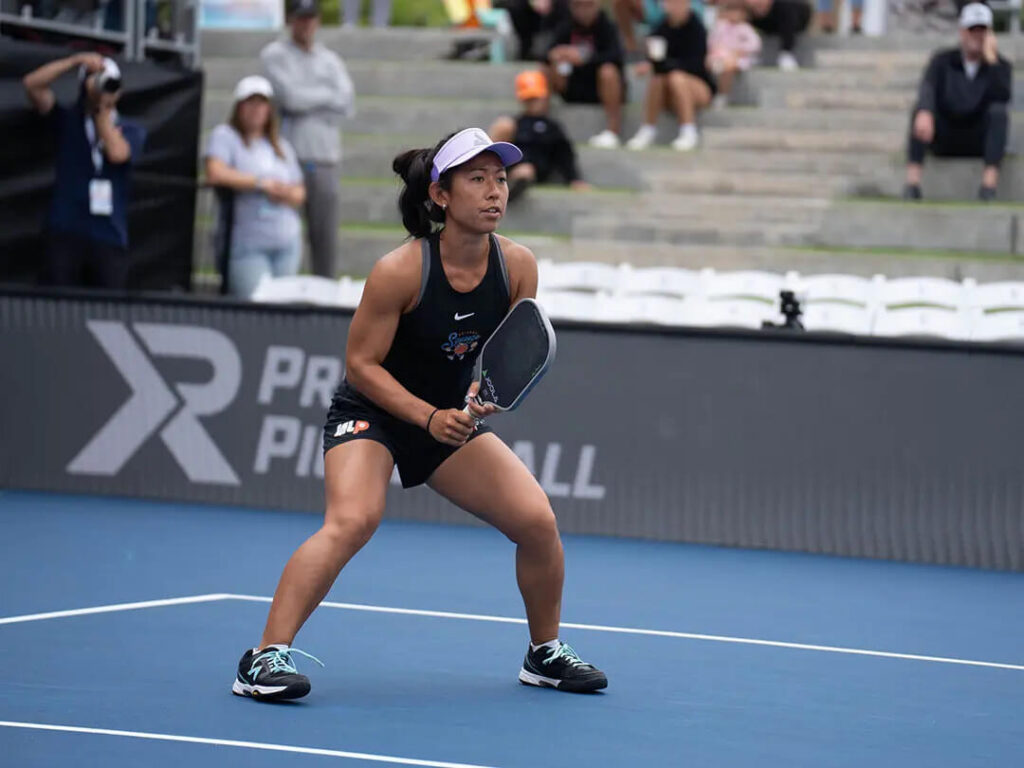
Practice Methods
Solo Practice
Developing how to be good at pickleball skills requires consistent practice:
Wall Practice: Use any flat surface to practice accuracy and control.
Shadow Practice: Perform shots without balls to perfect technique.
Rebound Nets: Use nets that return balls for solo drilling.
Partner Drills
Dinking Exchanges: Practice cross-court and straight dinking.
Kitchen Runs: Alternate baseline to kitchen transitions.
Serve and Return: Focus on deep serving and return positioning.
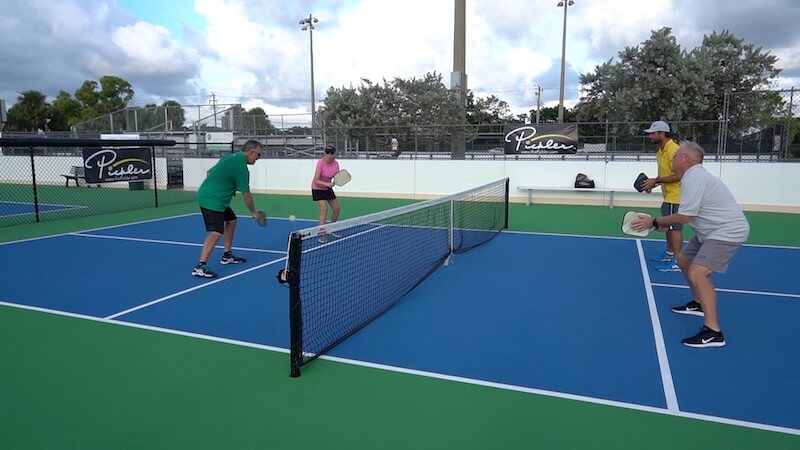
Equipment and Smart Playing
Equipment Basics
Understanding how to be good at pickleball includes proper equipment:
Paddle: Choose balanced paddles for control and power.
Shoes: Get court shoes with lateral support, not running shoes.
Apparel: Wear moisture-wicking clothes for full movement.
Play with Better Players
Playing with opponents 0.5-1.0 levels above your rating is key to learning how to be good at pickleball. This exposes you to higher strategies without being overwhelming.
Advanced Skills
Shot Selection
Pros emphasize that learning how to be good at pickleball requires high-percentage shots rather than low-percentage winners.
High Percentage Play:
- Hit to larger court areas, not lines
- Choose shots based on position
- Prioritize consistency over winners
- Build advantages over time
Anticipation
Advanced players excel at reading opponents’ shots.
Reading the Game:
- Study opponent body language
- Learn common shot patterns
- Practice reading ball trajectory early
- Develop court awareness
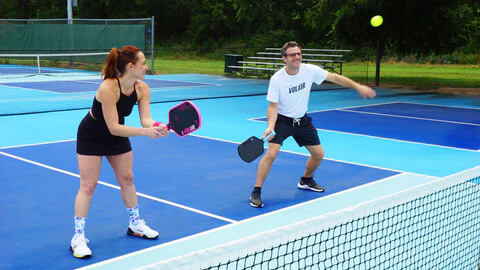
Progress Tracking
Measuring Improvement
Understanding how to be good at pickleball includes tracking progress:
Assessment Methods:
- Use USA Pickleball skill sheets (2.0 to 5.0 levels)
- Track wins and losses in games
- Record gameplay for analysis
Practice Schedule
Practice 2-3 times per week to see improvement in how to be good at pickleball:
- 30% drilling specific skills
- 50% match play for strategy
- 20% fitness and footwork
Learning how to be good at pickleball combines technical skills, strategic thinking, and consistent practice. The sport rewards players who focus on fundamentals, stay patient during rallies, and make smart shots over flashy winners.
Success comes from mastering basics – serving consistently, moving efficiently, and choosing high-percentage shots. Pros emphasize that pickleball is as much mental as physical, requiring strategic thinking and emotional control alongside technical skills.
Whether starting your pickleball journey or breaking through to higher levels, improvement comes through deliberate practice, playing with better opponents, and focusing on fundamentals. The path to becoming good at pickleball is accessible to all ages and backgrounds – it simply requires dedication, smart practice, and continuous learning.

